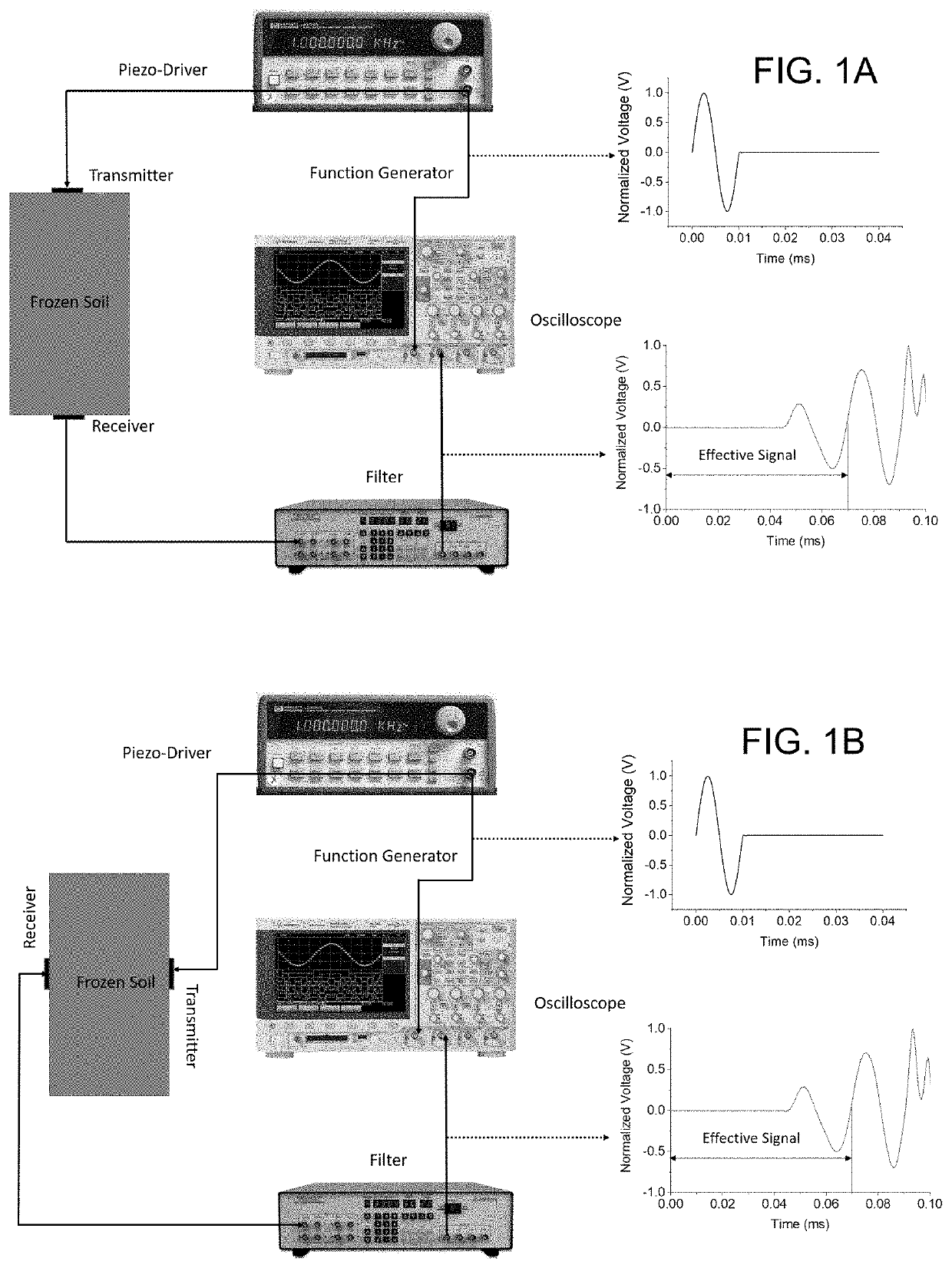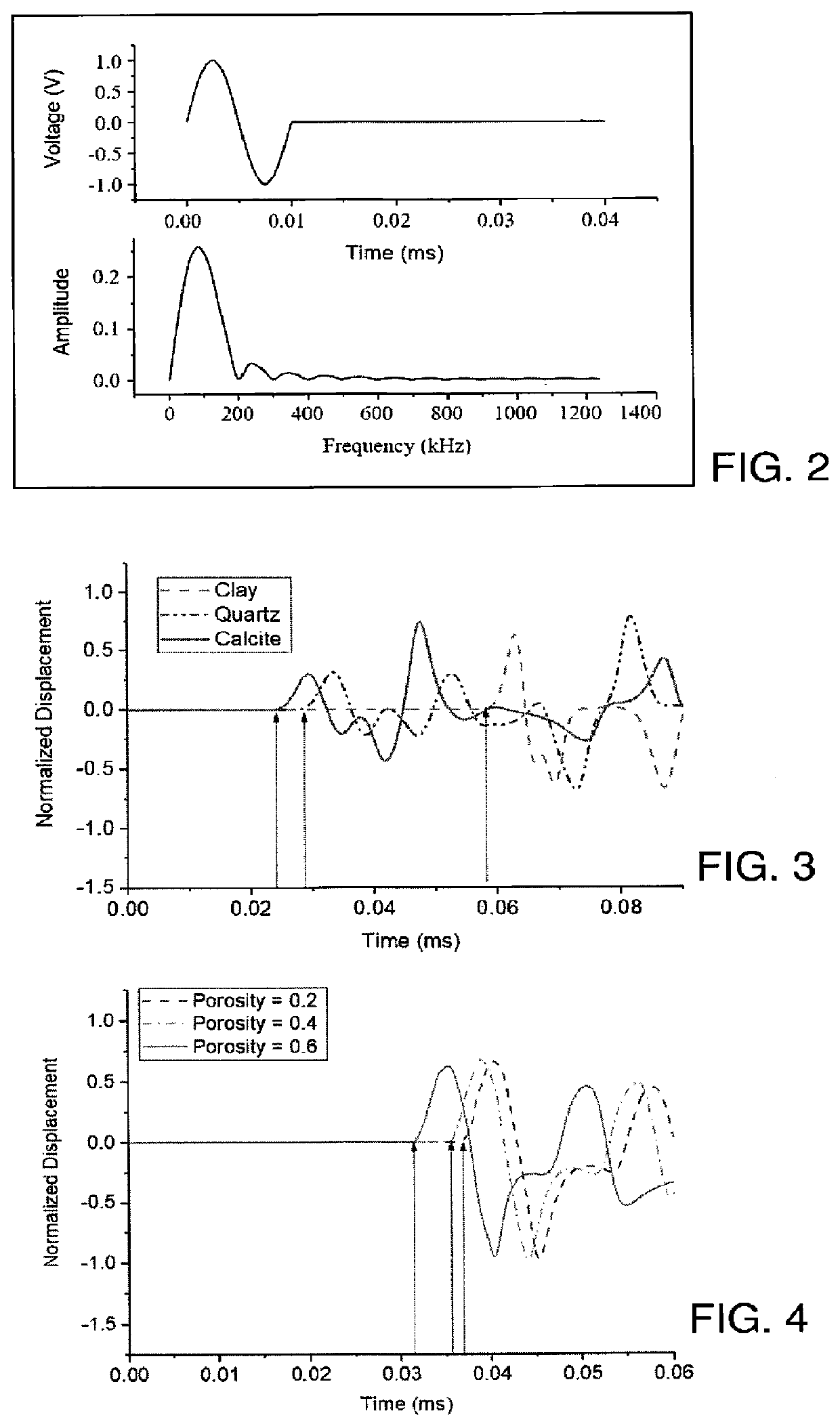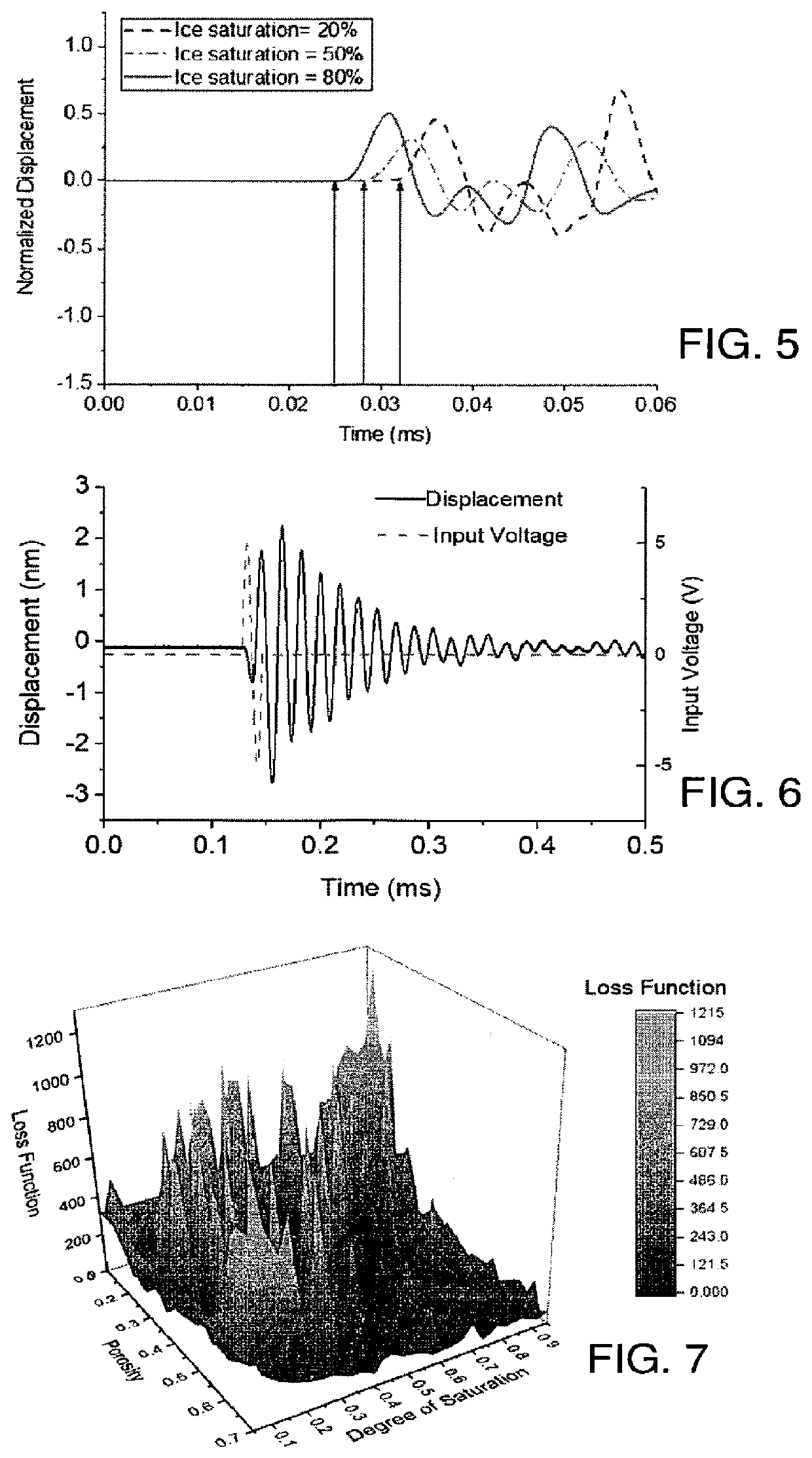Systems and Methods for Ultrasonic Characterization of Permafrost, Frozen Soil and Saturated Soil Samples
a technology of ultrasonic characterization and permafrost, which is applied in the field of civil engineering, can solve the problems of thaw-unstable permafrost, difficult thaw-instable permafrost, and the construction of structures on traditionally frozen soil
- Summary
- Abstract
- Description
- Claims
- Application Information
AI Technical Summary
Benefits of technology
Problems solved by technology
Method used
Image
Examples
first working embodiment (
Frozen Soil & Permafrost)
[0120]A general schematic of the UPV test setup employed in a first embodiment of the present invention is illustrated in FIG. 1. In permafrost soils, ice is often present in varying amounts. The co-existence of water and ice depends on soil texture, and temperature and salinity; some fine-grained soils may have an unfrozen water content in excess of 20 percent even at ground temperatures below −5° C. Therefore, in the test setup, it is assumed that the frozen soil specimen is composed of three phases: solid grains, pore-water, and pore-ice. The transmitters can be located either vertically at the two ends of a soil sample (FIG. 1A) or horizontally on the wall of a multilayered sample (soil layers or ice lenses in frost susceptible samples) (FIG. 1B) to generate the stress waves. The wave travels through the soil sample and is received by a receiver at the other end of the sample. The function / arbitrary waveform generator (e.g. HP 33120A) applies direct digi...
first embodiment summary
[0164]In the forgoing embodiment, a novel spectral element-based poromechanical model was developed for ultrasonic wave propagation through permafrost. The ultrasonic waves can be easily generated by means of a simple Ultrasonic Pulse
[0165]Velocity (UPV) setup in a geotechnical laboratory or in the field. The developed solution predicts the signal obtained at the receiver when the soil specimen is subjected to an ultrasonic impulse load. By matching the measured signal from the receiver and the predicted response, the soil properties can be derived inversely through the proposed machine learning algorithms. It was found that such an inversion analysis is highly non-convex. Therefore, the optimization procedure was divided into pre-search and deep-search. The pre-search was performed using Bayesian optimization to determine the possible subspace in which the prediction matches the measurement to the largest extent. Then, the deep-search for the most optimum solution was performed usi...
second working embodiment (
Frozen Soil & Permafrost)
[0166]In ultrasonic tests, an ultrasonic transmitter transforms electrical energy into mechanical energy (piezoelectric effect) to generate stress waves within a soil sample. However, the exact induced mechanical energy (force) still remains unknown due to the complexity of piezoelectric behavior and transducer structure. The preceding embodiment placed primary focus on the mechanism of wave propagation within frozen soils with assumed input force as boundary conditions, leaving room for improved accuracy in the interpretation of the ultrasonic signals.
[0167]The ultrasonic setup in the second embodiment once again includes a function generator, receiver amplifier, oscilloscope, ultrasonic transmitter and receiver. The ultrasonic setup is summarized in FIG. 12A, and differs from those of FIGS. 1A & 1B in that the permafrost or frozen soil sample is substituted for a calibration object during an extra calibration step employed in the second embodiment methodol...
PUM
 Login to View More
Login to View More Abstract
Description
Claims
Application Information
 Login to View More
Login to View More - R&D
- Intellectual Property
- Life Sciences
- Materials
- Tech Scout
- Unparalleled Data Quality
- Higher Quality Content
- 60% Fewer Hallucinations
Browse by: Latest US Patents, China's latest patents, Technical Efficacy Thesaurus, Application Domain, Technology Topic, Popular Technical Reports.
© 2025 PatSnap. All rights reserved.Legal|Privacy policy|Modern Slavery Act Transparency Statement|Sitemap|About US| Contact US: help@patsnap.com



